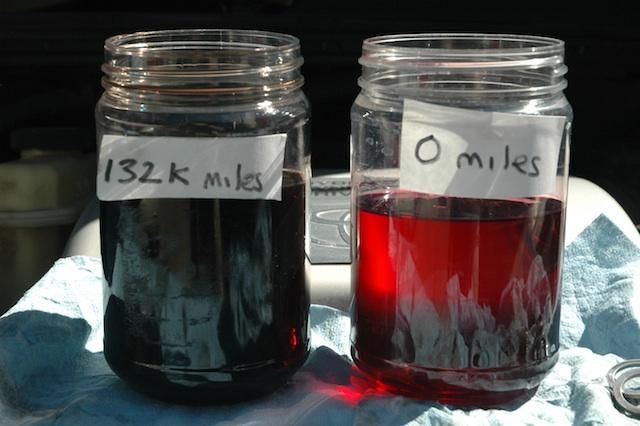


The automatic transmission is one of the most complex and essential components of your vehicle. Proper maintenance, especially regarding the transmission fluid, is crucial to ensure smooth operation and longevity. In this comprehensive guide, we'll explore the importance of transmission fluid, its functions, and practical tips for maintaining it effectively.

Transmission fluid is a specialized lubricant designed specifically for automatic transmissions. It serves several vital purposes:
| Purpose | Description |
|---|---|
| Lubrication | Reduces friction between moving parts, preventing wear and tear. |
| Hydraulic Pressure | Provides the necessary hydraulic pressure for smooth gear shifts. |
| Cooling | Dissipates heat generated by the transmission components. |
| Cleaning | Helps flush away contaminants and debris from the system. |
Neglecting transmission fluid maintenance can have severe consequences:
Increased friction and wear on internal components
Erratic or delayed gear shifts
Transmission overheating and potential failure
Reduced fuel efficiency and performance
Regular transmission fluid changes and inspections are essential to avoid these issues and extend the lifespan of your transmission.
Pay attention to the following warning signs that may indicate transmission fluid issues:
Difficulty shifting gears
Slipping or delayed engagement
Unusual noises or grinding sounds
Leaks or puddles under the vehicle
Dark, burnt, or contaminated fluid
If you notice any of these signs, it's crucial to have your transmission inspected by a professional as soon as possible.

To ensure optimal performance and longevity of your automatic transmission, follow these maintenance tips:
| Frequency | Action |
|---|---|
| Monthly | Check the fluid level using the dipstick and top up if necessary. |
| Annually | Inspect the fluid condition (color, smell, and consistency). |
Fresh transmission fluid should be bright red or pinkish and have a sweet, tart smell. If the fluid appears dark, opaque, or has a burnt odor, it's time for a fluid change.
Consult your vehicle's owner's manual for the recommended transmission fluid change intervals. These intervals may vary based on factors such as driving conditions, mileage, and the type of fluid used.
| Driving Conditions | Typical Interval |
|---|---|
| Normal | Every 60,000 - 100,000 miles |
| Severe (towing, stop-and-go traffic, extreme temperatures) | Every 30,000 - 50,000 miles |
Different vehicles require specific types of transmission fluid. Using the wrong fluid can cause compatibility issues and lead to transmission damage. Always refer to your owner's manual or consult a professional mechanic to ensure you're using the correct fluid for your vehicle.
In addition to regular fluid changes, a transmission flush is recommended every few years or as advised by your mechanic. This process involves completely draining the old fluid and replacing it with fresh fluid, ensuring that all contaminants are removed from the system.
Certain driving habits can put unnecessary strain on your transmission:
Abrupt acceleration or deceleration
Frequent towing or hauling heavy loads
Shifting gears while the vehicle is in motion (for manual transmissions)
Adopting a smooth and gentle driving style can help prolong the life of your transmission and its fluid.
Even with proper fluid maintenance, it's essential to have your transmission inspected by a professional mechanic periodically. They can identify potential issues early and recommend appropriate repairs or adjustments to prevent further damage.
By following these transmission fluid maintenance tips, you can ensure the smooth operation of your automatic transmission and avoid costly repairs or premature replacement.
Neglecting transmission fluid maintenance can lead to increased friction, premature wear on internal components, erratic gear shifts, transmission overheating, and potential transmission failure. It can also reduce fuel efficiency and overall vehicle performance.
It is recommended to check your transmission fluid level monthly and inspect the fluid condition annually. Consult your owner's manual for the specific intervals recommended for your vehicle.
Fresh transmission fluid should be bright red or pinkish with a sweet, tart smell. Dark, opaque, or burnt-smelling fluid indicates contamination and the need for a fluid change.
No, different vehicles require specific types of transmission fluid. Using the wrong fluid can cause compatibility issues and lead to transmission damage. Always refer to your owner's manual or consult a professional mechanic.
A transmission flush is a process that involves completely draining the old fluid and replacing it with fresh fluid, ensuring that all contaminants are removed from the system. It is recommended every few years or as advised by your mechanic.
Harsh driving habits, such as abrupt acceleration or deceleration, frequent towing or hauling heavy loads, and shifting gears while the vehicle is in motion (for manual transmissions), can put unnecessary strain on the transmission and its fluid, leading to premature wear and potential failure.
Following the manufacturer's recommended service intervals for transmission fluid changes ensures that the fluid is replaced at the appropriate intervals based on factors such as driving conditions, mileage, and the type of fluid used. This helps maintain optimal transmission performance and longevity.
Signs of transmission fluid problems include difficulty shifting gears, slipping or delayed engagement, unusual noises or grinding sounds, leaks or puddles under the vehicle, and dark, burnt, or contaminated fluid.
While it is possible to check and top up your transmission fluid yourself, it is generally recommended to have a professional mechanic handle this task. Improper fluid level or using the wrong fluid type can lead to transmission damage.
It is recommended to have your transmission inspected by a professional mechanic periodically, even with proper fluid maintenance. They can identify potential issues early and recommend appropriate repairs or adjustments to prevent further damage.

Sarah isn't your average gearhead. With a double major in Mechanical Engineering and Automotive Technology, she dived straight into the world of car repair. After 15 years of turning wrenches at dealerships and independent shops, Sarah joined MICDOT to share her expertise and passion for making cars run like new. Her in-depth knowledge and knack for explaining complex issues in simple terms make her a valuable asset to our team.



